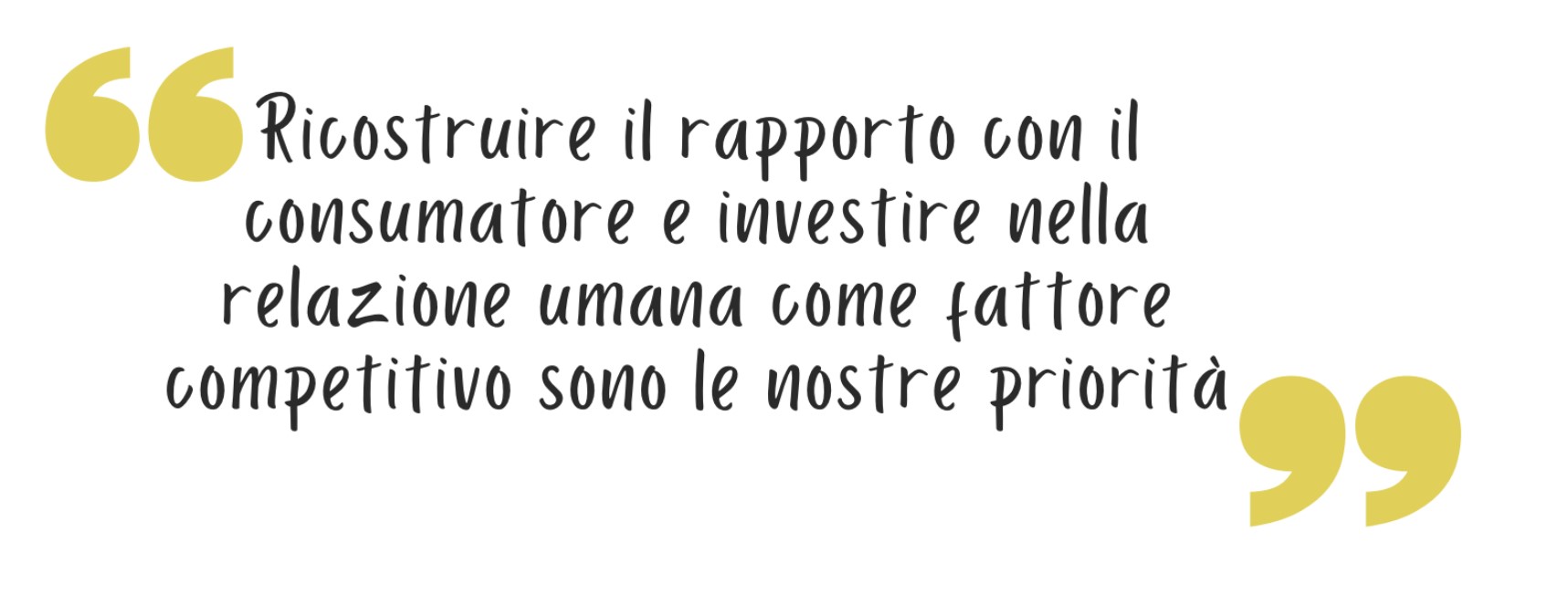Case study
Back to store: the design of a new customer experience applying the
MYSTERY COACHING® model
CUSTOMER’S GOALS
#Safely reopen shops
#Confidently bring customers back to shops
#Rebuild relationship with consumers
#Relationship as a competitive factor
PROFILE
| Customer | Specialised Food Retail |
| Shops | 110 in Italy, 10 abroad |
| Period | May - July 2020 |
| Target | Pilot on 6 shops in Milan of which 3 direct and 3 franchisees |
Context
This Business Story tells the experience of a customer in the specialised food retail sector
whose success factors are high-quality Made in Italy products and a strong franchising model.
In the market context, the end-of-May marketing
research, provided by leading institute, regarding the consumer behaviour, show that 63% of customers still want to shop in physical stores and 49% want to rediscover human contact.
Challenge
Back to Store. Re-open shops safely and confidently bring customers back to the
shops. Rebuild the relationship with the consumer so that the relationship becomes a competitive and distinguishing factor..
In particular, the real challenge is to welcome back sellers into the shop and help them to reconnect themselves with the physical space, involving them in reviewing procedures to make the customer feel safe with an omnichannel model for a new customer experience.
Solution
The Mystery Coaching® project started with the drafting of the safety procedure for the reopening of the shops. With remote group coaching, involving the management and some shop managers (selected according to size and location), we analysed the context, extracted critical elements and produced an explanatory brochure and video.
The next stage was a remote auditing aimed to verifying the state of procedures' adoption and analysing changes in the context and identified risks.
These data, crossed with CRM data on loyalty cards and e-commerce purchasing behaviour, provided an impetus to redesign an omnichannel model.
A project that could link online and shops, between technology and relational activities with the customer that have resulted in innovative initiatives such as the ability to make appointments using the website, the customisation of the offer at the point of sale according to purchase preferences detected by CRM, and safe management of the product tasting phase.
Training involved three different methods: e-learning, group conference call training, and on-the-job coaching with observation, training and feedback activities.
The Mystery Audit, activities, at the same time, has been delivered to verify, on the ground, the effectiveness of the training and the correspondence between the context and the new service standard..
Throughout the project, we maintained the relationship with the staff with remote and in-person group coaching activities aimed at eliciting discussion by reading data and interpreting the context in real time.

METHODS USED
- Internal context assessment
- Risk and opportunity analysis
- Safety procedure codification
- Customer service model codification
- Remote auditing
- In-presence mystery audit
- Remote training
- In-presence on-the-job coaching
- In-presence group coaching










